Chinese Artist Ma Ke Playfully Mixes Art-Historical References in His Newest Paintings
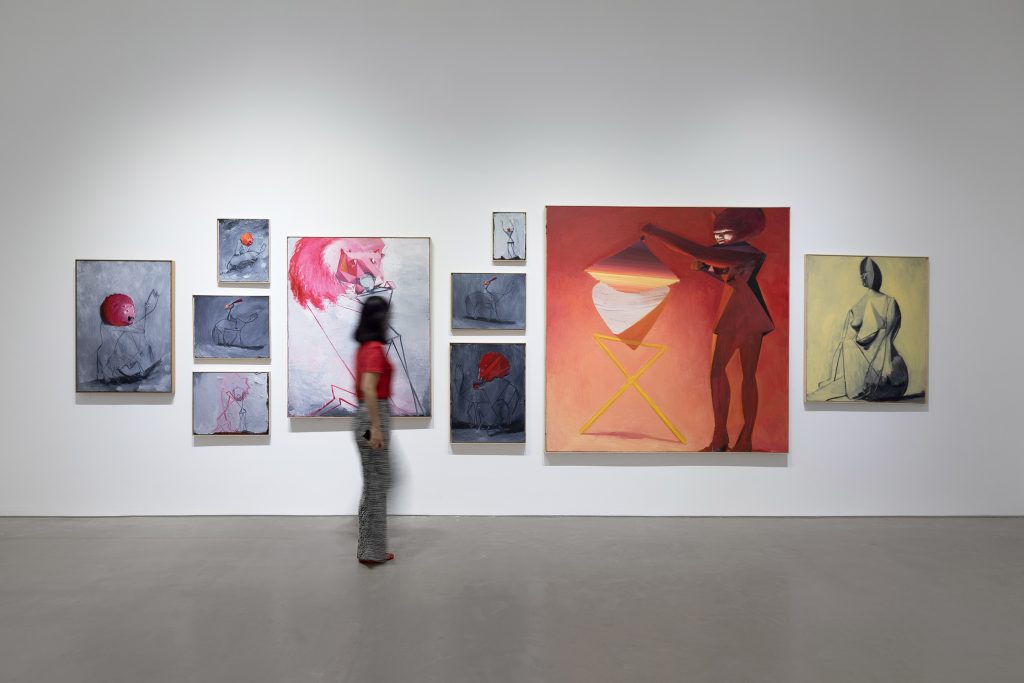

Katie White

Chinese artist Ma Ke (b. 1970) uses his paintings as a space in which to compresses his imaginative energy.
In his work, fragments build upon one another like a song with layered notes, made by placing sound upon sound.
“I paint by covering, or, to be more concise, altering previous images. I accumulate energy by constantly breaking old habits or by challenging my own thinking. To me, the artist’s character is based upon the energy they secure from the present moment,” he explains.
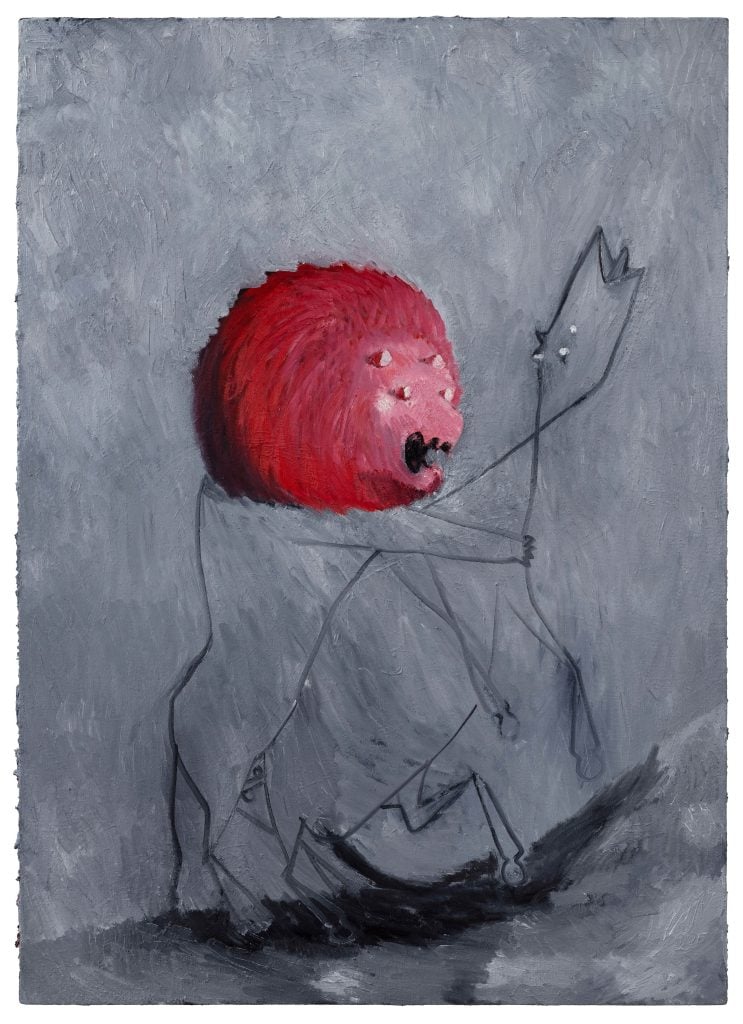
Ma Ke, Lion and Horse (2019). Courtesy of N3 Contemporary Art.
In his most recent paintings, currently on view in “Ma Ke” at N3 Contemporary Art in Beijing, his subject matter remains centered—as it has been for a long time—on the human body (although there are a few scenes of lions and horses, too).
The figure of the rider, a perennial image in his oeuvre, returns too, trekking out across horizonless canvases.
The rider is said to reference a poem by Tang Dynasty poet Wei Zhuang, which reads: “In the highest sky hangs a hazy moon; to the air, the rider roams.”
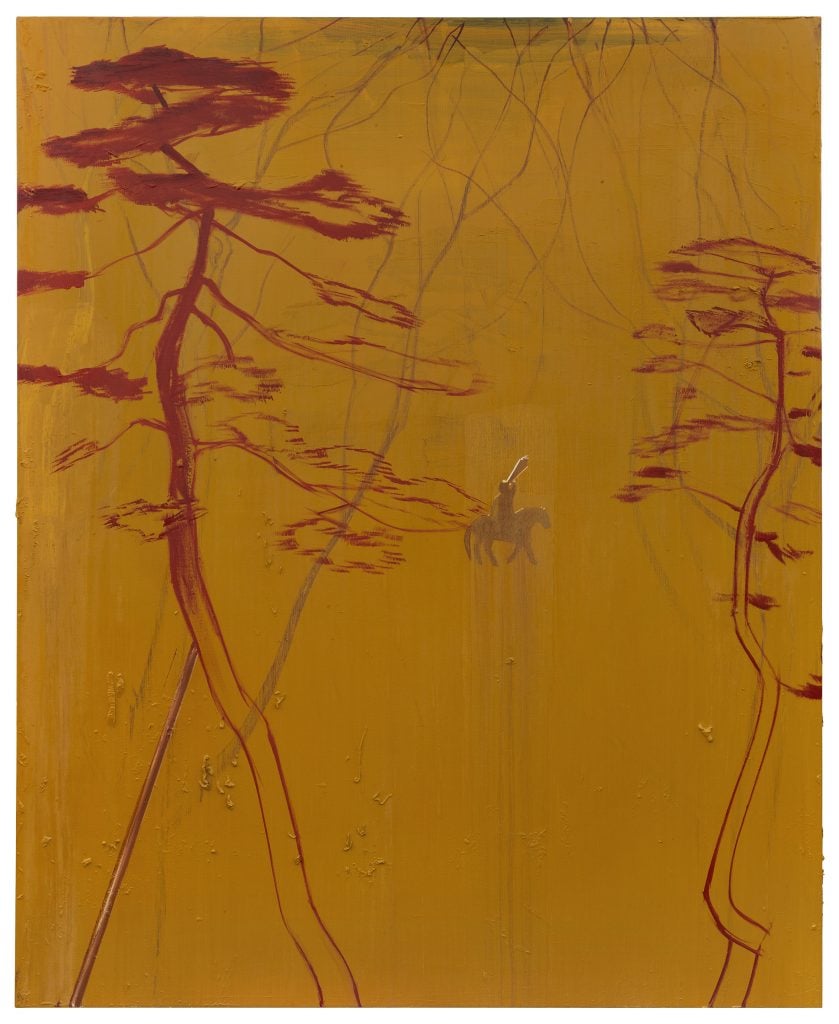
Ma Ke, The Rider Who Roams the Sky (2019). Courtesy of N3 Contemporary Art.
The rider, in the context of the poem, is meant to symbolize officials arriving at the ancient royal Chinese court.
However, as the writer Jiang Shan points out in the exhibition catalogue, Ma’s images never appear to reference that specific historical context (or any historical context, really).
“It thus seems that Ma, the painter, encourages the viewer to consider and to interpret freely, not only his works but also the poem, the history, and even the wider cultural background in which the literature was produced,” Jiang Shan writes.
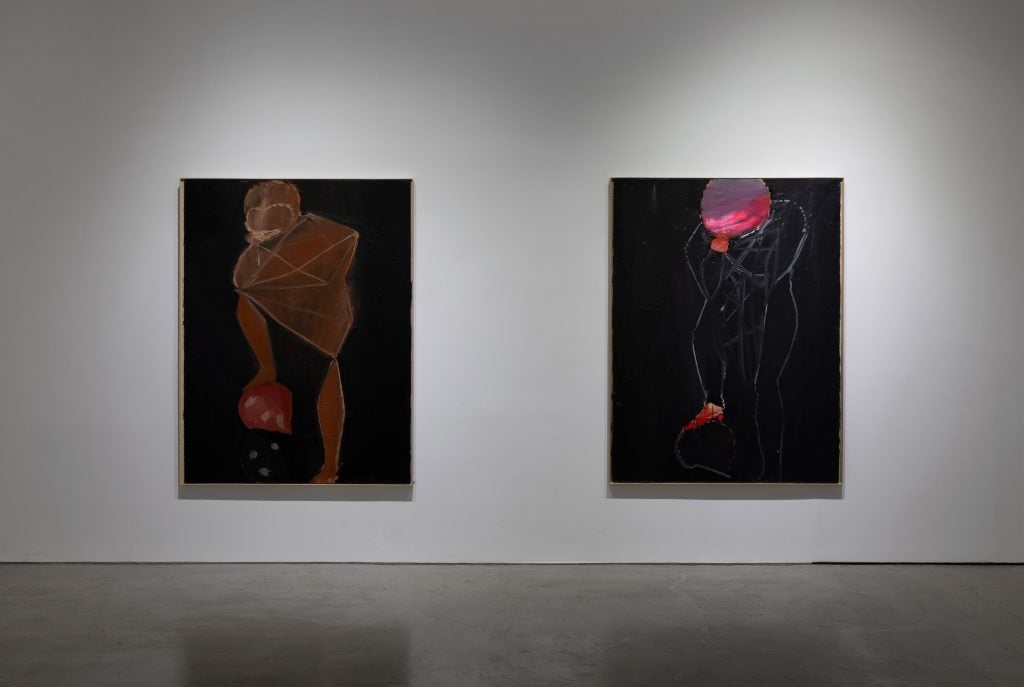
Installation view of “Ma Ke,” 2020. Courtesy of N3 Contemporary Art.
That idea can be seen throughout the exhibition, in which Ma freely reimagines art-historical references from both Eastern and Western art history.
Rodin’s Thinker is referenced in several canvases, but schematically, in the fewest lines necessary to convey the reference.
Other images picture solitary women, almost Cubistic in form, combing their hair. These works bring to mind Picasso’s Woman Plaiting Her Hair, along with early Japanese woodcuts and Impressionist depictions of the subject matter, and the works of George Condo, too.
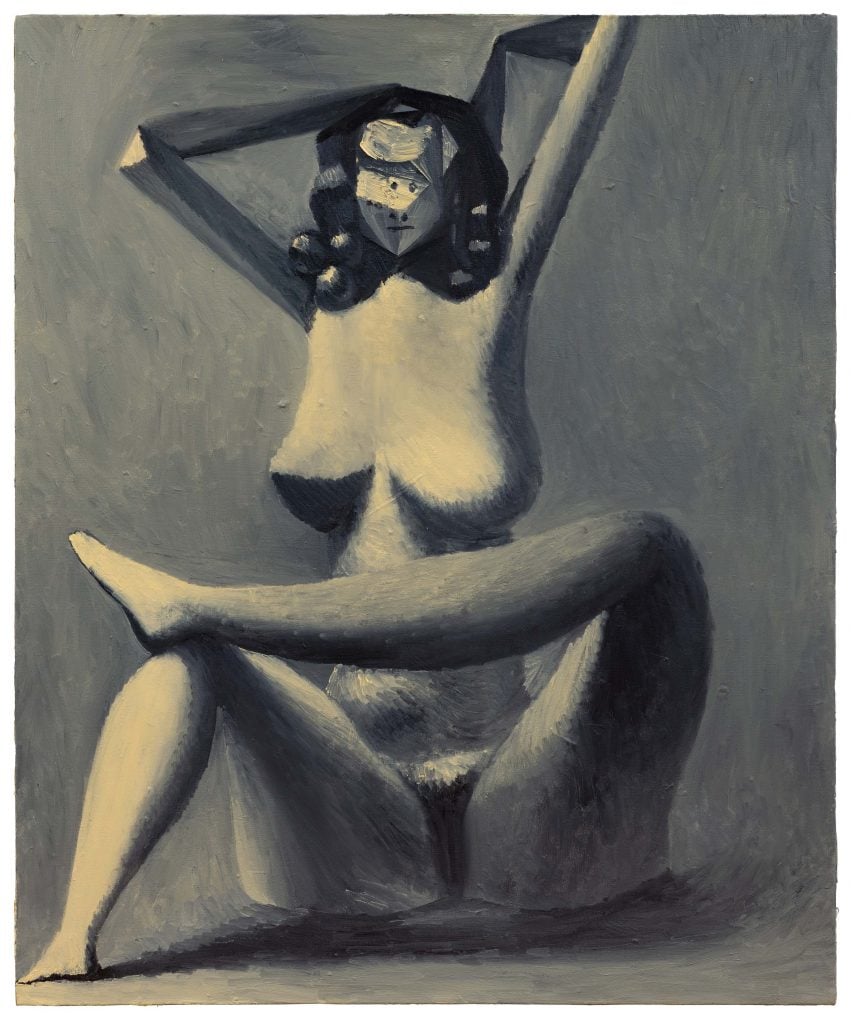
Ma Ke, Female Nude (2019). Courtesy of N3 Contemporary Art.
In Ma’s imaginative world, symbols are left to the interpretation of the viewer.
For instance, he has often repeated a figure of a man with a loudspeaker, which suggests the cultural upheaval he witnessed in the China of his youth.
That image reappears in his newest canvases, but takes on new meanings: sometimes the loudspeaker appears to border a Dionysian jug of wine. As Jiang Shan writes in the catalogue, in China today, the loudspeaker brings to mind the government vans that have recently been blaring out messages about the coronavirus in cities across the country.
Ma has said that he is not as concerned with the correct formal analysis of his paintings as he is with the practice that brings the works into being. In these new works, he continues to give viewers that playful space for projecting their own narratives.

Installation view of “Ma Ke,” 2020. Courtesy of N3 Contemporary Art.
“Ma Ke” is on view at N3 Contemporary Art is on view through July 30.